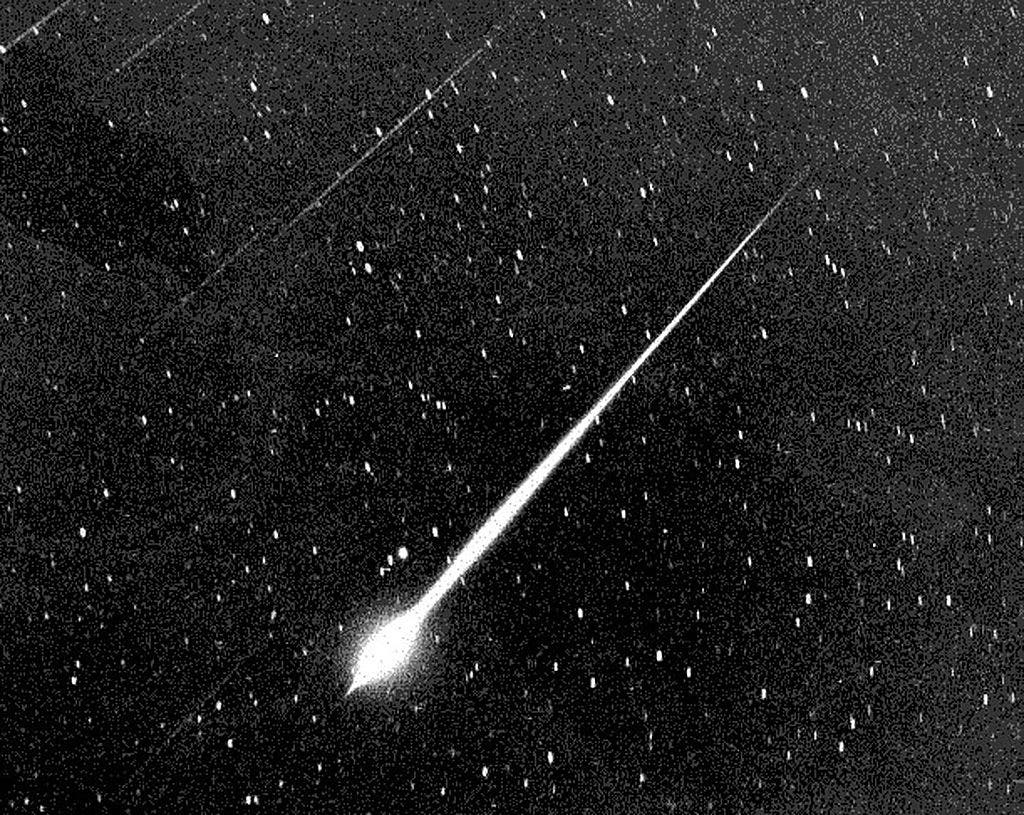Community Corner
Geminids, 2021's Best Meteor Shower: When To See Fireballs
This meteor shower is a dandy. Get far away from city lights to take in the prolific Geminids, known for producing colorful fireballs.

ACROSS AMERICA — The upcoming Geminid meteor shower gets top billing as the best of the year, reliably producing anywhere from 50 to 100 meteors an hour at the peak, including multicolored fireballs — but you’ll want to get away from streetlights for the best views.
The Geminids run from Dec. 4-17 and peak overnight Monday and Tuesday, Dec. 13-14. The best time to see the Geminids is around 2 a.m. the morning of the 14th when the shower’s radiant point — the constellation Gemini — is at its highest point in the sky.
If you can’t make it outside during the peak, don’t despair.
Find out what's happening in Across Americawith free, real-time updates from Patch.
You should also be able to see a fair number of shooting stars a few days earlier as the Geminid meteor shower builds toward its crescendo. And if you can’t or don’t want to stay up most of the night scanning the skies for meteors and fireballs, early-evening skywatchers may catch a rare earthgrazer — that is, a slow-moving, long-lasting meteor traveling horizontally across the sky.
A waxing gibbous moon — that is, about half of the face is illuminated — may blot out some of the fainter meteors. But these meteors are so prolific and bright that you should be able to see some shooting stars, especially in areas with dark skies.
Find out what's happening in Across Americawith free, real-time updates from Patch.
If that’s not possible, just know the number of visible meteors per hour drops to about 30 or 40 in the suburbs, and those in downtown city centers will see almost nothing at all.
Meteors occur when Earth, in its orbit around the Sun, passes through debris left behind by disintegrating comets and space rocks. The Geminid meteors fly as Earth passes through the massive trail of dusty debris left behind by the rocky object named 3200 Phaethon. The dust and grit burn up when they enter Earth’s atmosphere, causing the flurry of meteors.

Phaethon is one of the mysteries of the universe, according to NASA meteor expert Bill Cooke.
“It’s either a near-Earth asteroid or an extinct comet, sometimes called a rock comet,” he wrote on a blog on the agency’s website. “There is another object — an Apollo asteroid named 2005 UD — that is in a dynamically similar orbit to Phaethon, prompting speculation that the two were once part of a larger body that split apart or collided with another asteroid.”
There’s more: “Most shower meteors are shed by comets when their orbits take them into the inner Solar System, but the Geminids may be the debris from this long-ago breakup or collision event. When you consider that the Geminid meteor stream has more mass than any other meteor shower, including the Perseids, whatever happened back then must have been pretty spectacular.”
The first known report of the Geminid meteor shower was in 1833, when it was seen from a riverboat moving slowly on the Mississippi River. The shower produced 10 or 20 an hour back then, but the Geminids have grown in intensity over the centuries as Jupiter’s gravity tugs particles from 3200 Phaethon closer to the Earth.
Here are some tips to get the most out of your nighttime meteor-watching excursion:
- Give your eyes 30 minutes to an hour to adjust to the darkness.
- Lie flat on your back on a thick blanket or hammock, or sit back in a reclining lawn chair so you can see as much sky as possible. Don’t look directly at Gemini, the shower’s radiant point; you’ll miss some of the amazing tails associated with this wintertime favorite. Instead, look slightly away from the constellation.
- The only thing that makes the Geminid meteor shower take second place to August’s Perseid meteor shower is the late fall chill, so take along some hot drinks and snacks, and prepare to settle in. The Geminids reward patience. They often fly in spurts, but there could be lulls when you see no meteors at all.
If you miss the Geminids, there’s one more chance in 2021 to see meteors. The Ursid meteor shower runs from Dec. 17 to 26 and always peaks around the winter solstice, which is Dec. 21.
The Ursids are fairly low-key, delivering five or 10 meteors an hour, but on rare occasions they can produce outbursts of 100 or more meteors an hour. The meteors appear to come from the Ursa Minor constellation.
Get more local news delivered straight to your inbox. Sign up for free Patch newsletters and alerts.